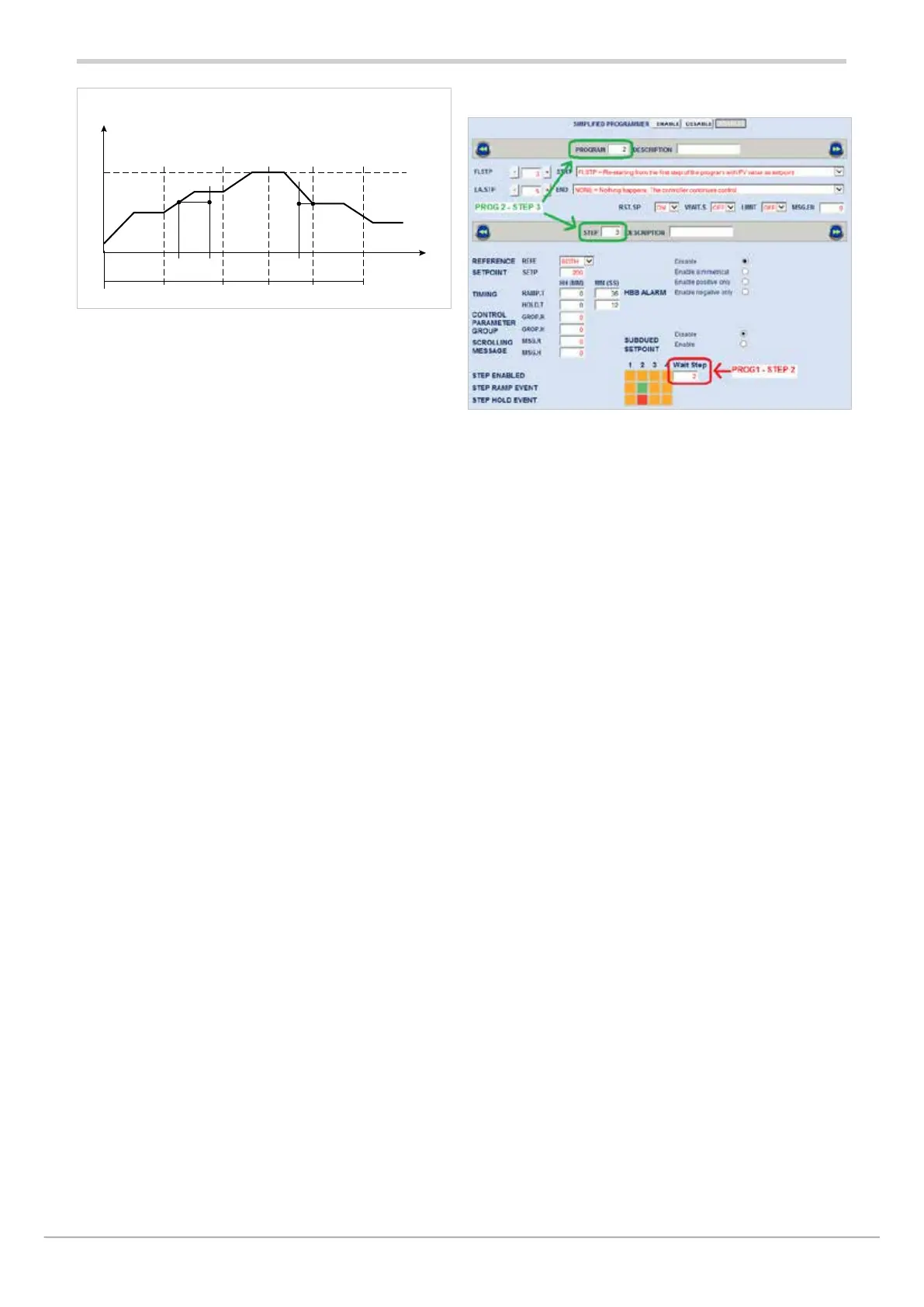80209C_MHW_850-1650-1850_01-2020_ENG_pag. 215
PV1
t1
A
B B1
A1
t2
time
Step 0 Step 1 Step 3Step 2 Step 4
PV / Setpoint
If the variable has values lower than the ones requested during
a setpoint raise phase (point A, t1), restart is conducted by
lowering the active time base until the setpoint profile (point
A1) is intercepted.
If the variable has values lower than the ones requested
during a setpoint lower phase (point B, t2), restart is
conducted by raising the active time base until the setpoint
profile (point B1) is intercepted.
If interception is impossible, as in the case of variable at
value PV1, the program is restarted from the active setpoint
and time.
If the HBB control is on, programmer base times remain in
effect until the variable re-enters the set tolerance band,
symmetrical to the setpoint value.
5.13.10. Managing a double programmer
The second input and the second PID let you activate a
second programmer identical to the one described above.
The two programmers can work in:
• Asynchronous mode (parameter PROGR = On2 ), or
• Synchronous mode (parameter PROGR = On.S).
5.13.10.1. Programmers in asynchronous mode
In this work mode the two programmers have independent
time bases, therefore the Start-Stop, Skip step, Skip to end
of program, and Reset commands are separate for each
programmer.
With asynchronous programmers:
• Consents, i.e. step enable conditions (ENABLE), are the
ones defined by the single programmer for the step it is
executing, i.e., only the consents for the step that the
first programmer (PROG1) is executing for the process
managed by PROG1 and only the consents for the step
that the second programmer (PROG2) is executing for
the process managed by PROG2.
• You can subordinate execution of PROG2 steps to the
execution of PROG1 steps. This is done by means of the
PROG2 wait step, configurable with GF_eXpress.
The result obtained depends on the states of PROG1
and PROG2 programs when the set condition occurs.
Example
You want to configure a wait so that PROG2 does not start
executing STEP 3 until PROG1 has started executing STEP 2.
Set the Wait Step as follows with GF_eXpress:
The following cases are possible:
1. PROG.1 is already executing STEP 2 when PROG2 is
about to start executing STEP 3: PROG2 continues to
run STEP2 without any wait.
2. PROG.1 is already executing a step subsequent to STEP
2 when PROG2 is about to start executing STEP 3:
PROG2 continues to run STEP2 without any wait.
3. PROG.1 is in one of the following states:
• READY (programmer never started or has already
ended the program and was configured to return to
READY, parameter End=rESE);
• END (programmer has already run the program
and was configured to stay in this condition,
parameter End=NONE or End=Off); and so PROG2
is suspended until PROG1 arrives at STEP 2.
When PROG1 starts STEP 2, PROG2 starts
executing STEP 3
The start step and start hold events are the ones for the step
in execution by its programmer.
The settings for SUBDUED SETPOINT and for HBB (EN-
ABLE, BAND, HBB.R, HBB.H) are the ones for the step in
execution by its programmer.
Since the programmers are asynchronous it follows that, in
case of HBB, only the time base of the programmer affected
by the alarm will stop when the alarm trips, while the other
program keeps working normally.
